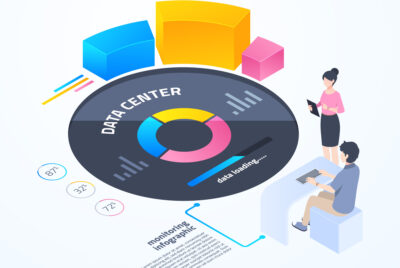In the dynamic realm of digital marketing, analytics play a pivotal role in understanding campaign performance, identifying trends, and making informed decisions to optimize strategies. This article explores essential metrics, tools for tracking performance, and the balance between data-driven insights and intuitive decision-making in digital marketing.
Key Metrics for Tracking Performance
1. Website Traffic:
- Unique Visitors: Measures the number of distinct individuals visiting your website within a specified period.
- Pageviews: Counts the total number of pages viewed by visitors, indicating engagement levels.
2. Conversion Rates:
- Conversion Rate: Calculates the percentage of visitors who complete a desired action, such as making a purchase or filling out a form.
- Click-Through Rate (CTR): Measures the percentage of users who clicked on a specific link or ad, indicating the effectiveness of your call-to-action.
3. Engagement Metrics:
- Bounce Rate: Indicates the percentage of visitors who navigate away from your site after viewing only one page, reflecting content relevance and user experience.
- Time on Page: Measures the average duration visitors spend on a webpage, indicating content engagement levels.
4. ROI and Cost Metrics:
- Return on Investment (ROI): Evaluates the profitability of a digital marketing campaign by comparing the revenue generated to the cost of the campaign.
- Cost per Acquisition (CPA): Calculates the average cost incurred to acquire a new customer or lead through digital marketing efforts.
5. Social Media Metrics:
- Engagement Rate: Measures interactions (likes, shares, comments) per post, indicating content relevance and audience engagement.
- Follower Growth: Tracks the increase in social media followers over time, reflecting brand awareness and audience reach.
Tools for Tracking Performance
1. Google Analytics:
- Key Features: Provides comprehensive insights into website traffic, user behavior, conversion rates, and more.
- Benefits: Enables segmentation of data, goal tracking, and customizable reporting to measure campaign effectiveness.
2. Social Media Analytics Platforms:
- Facebook Insights, Twitter Analytics, etc.: Offer metrics specific to each platform, such as reach, engagement, demographics, and post performance.
- Benefits: Facilitate optimization of social media strategies based on audience behavior and content performance.
3. Marketing Automation Tools:
- HubSpot, Marketo, etc.: Automate marketing tasks and provide analytics on lead generation, email campaigns, and customer interactions.
- Benefits: Improve efficiency, personalize marketing efforts, and track customer journeys across multiple channels.
4. Advertising Platforms:
- Google Ads, Facebook Ads Manager, etc.: Provide detailed analytics on ad performance, including impressions, clicks, conversions, and ad spend.
- Benefits: Enable real-time optimization of ad campaigns based on performance data and audience insights.
Balancing Data-Driven Insights with Intuitive Decision-Making
While data-driven insights are crucial for understanding trends and quantifying performance, intuitive decision-making adds a qualitative dimension to digital marketing strategies:
1. Contextual Understanding:
- Interpreting Data: Use analytics to identify patterns and trends, but also consider contextual factors that may influence consumer behavior.
- Customer Insights: Leverage qualitative data, such as customer feedback and market research, to gain a deeper understanding of audience preferences and motivations.
2. Agility and Adaptability:
- Responsive Strategy: Blend data-driven insights with intuition to adapt quickly to changing market dynamics and consumer trends.
- Innovative Solutions: Encourage creativity and experimentation in strategy development to uncover new opportunities and differentiate from competitors.
3. Human-Centered Approach:
- Customer-Centricity: Prioritize customer experience and satisfaction by incorporating empathy and understanding into decision-making processes.
- Brand Alignment: Ensure decisions align with brand values and resonate authentically with target audiences.
Leveraging Analytics for Continuous Improvement
Effective digital marketing hinges on leveraging analytics to iterate and refine strategies over time:
1. Continuous Monitoring:
- Regular Analysis: Monitor key metrics consistently to track performance trends and identify areas for improvement.
- Benchmarking: Compare performance against industry benchmarks and competitors to set realistic goals and benchmarks.
2. Iterative Optimization:
- A/B Testing: Experiment with different variables (e.g., ad copy, visuals, landing pages) to optimize conversion rates and enhance campaign effectiveness.
- Data-Driven Adjustments: Make data-driven adjustments to campaigns in real-time to maximize ROI and achieve business objectives.
3. Strategic Planning:
- Long-Term Vision: Develop long-term strategies informed by analytics insights to drive sustainable growth and maintain competitive advantage.
- Adaptability: Remain agile and adaptable in response to evolving market trends, consumer behaviors, and technological advancements.
Conclusion
Incorporating analytics into your digital marketing efforts is essential for measuring performance, identifying opportunities, and optimizing strategies for success. By leveraging key metrics and tools such as Google Analytics, social media analytics platforms, and marketing automation tools, businesses can gain actionable insights into customer behavior, campaign effectiveness, and ROI. Balancing data-driven insights with intuitive decision-making adds depth and context to strategy development, fostering innovation and customer-centricity. By continuously monitoring performance, iterating strategies based on analytics insights, and maintaining a proactive approach to optimization, businesses can drive continuous improvement and achieve sustainable growth in the competitive digital landscape.



